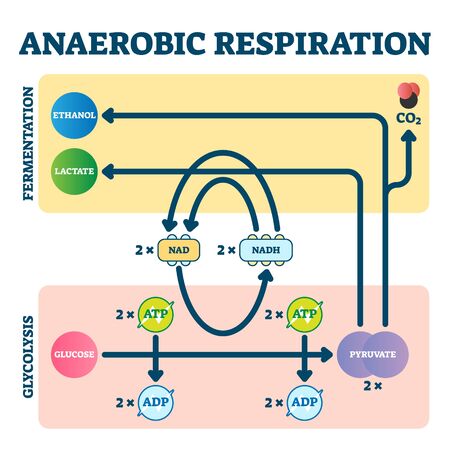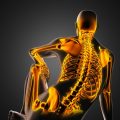Introduction to Cardiac and Pulmonary Rehabilitation
Cardiac and pulmonary rehabilitation programs are specialized healthcare services designed to help people recover from heart and lung conditions. In the United States, these programs play a critical role in supporting patients after events such as heart attacks, heart surgery, chronic obstructive pulmonary disease (COPD), or other chronic heart and lung diseases. The main goal is to improve patients’ overall health, boost their ability to function day-to-day, and reduce their risk of future health problems.
What Are Cardiac and Pulmonary Rehabilitation Programs?
These programs usually combine exercise training, education on healthy lifestyle changes, and counseling to lower stress. Medical professionals—including doctors, nurses, physical therapists, respiratory therapists, and dietitians—work together with each patient to create a plan that fits their needs. Programs typically last from several weeks up to a few months and are offered in hospitals, outpatient clinics, or community centers across the U.S.
Main Goals of Rehabilitation
| Goal | Description |
|---|---|
| Improve Physical Fitness | Help patients regain strength and endurance through supervised exercise. |
| Educate on Healthy Habits | Teach about nutrition, medication management, and smoking cessation. |
| Promote Emotional Well-being | Provide support for dealing with anxiety or depression related to illness. |
| Reduce Hospital Readmissions | Aim to prevent future hospital stays by managing symptoms better. |
| Enhance Quality of Life | Empower patients to return to daily activities with confidence. |
The Importance in Chronic Disease Management
Chronic diseases like heart failure and COPD can greatly impact a person’s life. Rehabilitation is an important part of ongoing care because it gives patients tools and support they need for long-term success. In the U.S., insurance plans including Medicare often cover these programs due to their proven benefits in reducing complications and improving survival rates. By focusing on both physical and emotional health, cardiac and pulmonary rehab helps patients take charge of their recovery journey and live healthier lives.
2. Standardized Tests for Assessing Functional Progress
In cardiac and pulmonary rehabilitation, tracking a patient’s progress is essential to ensure effective treatment and recovery. Standardized physical performance tests provide an objective way to measure improvements in strength, endurance, and overall function. Here are some of the most commonly used assessments in the United States:
Six-Minute Walk Test (6MWT)
The Six-Minute Walk Test is one of the simplest and most widely used tools to evaluate functional capacity in patients with heart or lung conditions. During this test, patients are asked to walk as far as possible in six minutes, usually along a marked hallway. The total distance walked gives healthcare providers a clear snapshot of cardiovascular and respiratory endurance.
| Test Name | Main Purpose | What It Measures | Typical Setting |
|---|---|---|---|
| Six-Minute Walk Test (6MWT) | Assess exercise tolerance | Distance walked in six minutes | Indoor hallway or track |
| Treadmill Stress Test | Measure heart function under stress | Heart rate, blood pressure, ECG changes during exercise | Rehab clinic or hospital lab |
| Shuttle Walk Test | Evaluate aerobic capacity | Number of laps between markers at increasing speed | Gym or open space |
Treadmill Stress Testing
Treadmill stress testing is another standard method, especially for cardiac rehab patients. This test involves walking or jogging on a treadmill while the speed and incline gradually increase. During the test, clinicians monitor vital signs like heart rate, blood pressure, and electrocardiogram (ECG) readings. The results help identify how well the heart copes with physical activity and can guide adjustments to the rehab plan.
Role of Standardized Tests in Rehab Progress Tracking
Using these standardized tests allows therapists and physicians to objectively track progress over time. By repeating these assessments at different stages of rehabilitation, care teams can see measurable changes and tailor programs to each patient’s needs. These tests also provide motivation for patients as they see their own improvements documented on paper.

3. Patient-Reported Outcome Measures (PROMs)
In cardiac and pulmonary rehabilitation, understanding how patients feel about their health and daily life is just as important as tracking physical changes. That’s where Patient-Reported Outcome Measures, or PROMs, come into play. PROMs are surveys or questionnaires that patients fill out themselves. These tools help healthcare teams see the bigger picture—how symptoms impact a patient’s quality of life, how much progress they feel theyve made, and what challenges they still face.
Why Use PROMs?
Standardized tests, like the 6-minute walk test or spirometry, measure what patients can physically do. But PROMs tell us how patients actually feel day-to-day. For example, someone might perform well on a treadmill test but still struggle with fatigue or emotional stress at home. PROMs bridge that gap by capturing information only the patient can provide.
Commonly Used PROMs in the US
Several PROMs are widely used in American cardiac and pulmonary rehab programs to track progress:
| PROM Name | What It Measures | Typical Use |
|---|---|---|
| SF-36 Health Survey | Overall health-related quality of life across 8 areas (physical function, pain, mental health, etc.) | Broad overview for most patients; helps compare health status over time |
| Kansas City Cardiomyopathy Questionnaire (KCCQ) | Symptoms, social limitations, and quality of life specific to heart failure | Heart failure patients; tracks symptom burden and treatment effects |
| St. George’s Respiratory Questionnaire (SGRQ) | Impact of lung disease on daily life and well-being | Pulmonary rehab; particularly COPD and other chronic lung conditions |
How PROMs Improve Rehab Outcomes
By regularly using surveys like the SF-36 or KCCQ, rehab teams can spot trends that might not show up in clinical tests alone. For example:
- If a patient’s exercise capacity is improving but their KCCQ scores show increased shortness of breath, care plans can be adjusted quickly.
- The SF-36 can reveal hidden struggles with anxiety or depression, prompting extra support.
- PROMs help patients stay engaged by letting them see their own progress—not just through numbers on a chart but by improvements they actually feel.
Integrating PROMs Into Practice
Most cardiac and pulmonary rehab programs in the U.S. include these surveys at intake, midway through rehab, and at discharge. Some clinics even use electronic tablets or online platforms so results can be tracked easily and shared with both providers and patients.
4. Integration of Test Results into Individualized Care
How U.S. Rehab Teams Use Test Results for Personalized Plans
In American cardiac and pulmonary rehabilitation, a patient-centered approach is key. Multidisciplinary teams—often including physical therapists, occupational therapists, respiratory therapists, nurses, and physicians—work together to develop the best possible care plan for each individual. To do this, they combine information from standardized tests and patient-reported outcome measures (PROMs) to tailor treatment and education.
Standardized Tests vs. Patient-Reported Outcomes: What’s the Difference?
| Standardized Tests | PROMs (Patient-Reported Outcome Measures) |
|---|---|
| Objective measurements (e.g., 6-Minute Walk Test, spirometry, blood pressure) | Subjective feedback on symptoms, daily function, and quality of life (e.g., questionnaires about fatigue, breathlessness, or mood) |
| Administered by healthcare professionals in a clinical setting | Completed by patients, often at home or during clinic visits |
| Helps track physical improvement and disease progression | Gives insight into how the patient feels and copes day-to-day |
Combining Results for Better Care
Rehab teams in the U.S. don’t just look at numbers—they also listen to what patients say about their experiences. By combining both types of results, they can:
- Identify what’s working well and where adjustments are needed.
- Create specific exercise goals based on test data and patient preferences.
- Address barriers such as anxiety, depression, or low motivation reported by patients.
- Educate patients using real examples from their own progress reports.
- Monitor long-term changes to prevent setbacks or complications.
Example: Putting It All Together
| Test Results | PROM Feedback | Treatment Plan Adjustment |
|---|---|---|
| Improved 6-Minute Walk distance by 50 meters over 8 weeks | Still reports high fatigue after sessions | Add energy conservation strategies and review medication timing with the physician |
| No change in spirometry values over time | Reports less shortness of breath with daily activities | Continue current plan but encourage more outdoor activities as tolerated |
| Slight increase in blood pressure during exercise tests | Mild anxiety before rehab sessions reported in PROMs | Add relaxation techniques and provide extra support during warm-ups |
The Role of Patient Education in U.S. Rehab Programs
An essential part of integrating test results is patient education. American rehab teams use both objective and subjective data to help patients understand their condition and treatment options. They might show progress graphs, review questionnaire answers together, and discuss how lifestyle changes can improve both test outcomes and daily quality of life. This collaborative approach empowers patients to take an active role in their recovery journey.
5. Challenges, Best Practices, and Future Directions
Addressing Barriers to Standardized Assessment in Diverse Populations
Standardized tests are essential tools for tracking progress in cardiac and pulmonary rehabilitation. However, applying these assessments across America’s diverse population comes with unique challenges. Language barriers, varying health literacy levels, and different cultural beliefs about health can affect how patients understand and respond to these tests. For example, a six-minute walk test might not be equally meaningful or accessible for people with mobility issues or those unfamiliar with the testing environment.
| Barrier | Impact | Possible Solutions |
|---|---|---|
| Language Differences | Misunderstanding test instructions or patient-reported outcomes (PROs) | Use of certified medical interpreters and translated materials |
| Health Literacy | Poor understanding of test purpose or scoring | Simplify language; use visuals and teach-back methods |
| Cultural Beliefs | Reluctance to participate or inaccurate self-reporting | Culturally sensitive education; engage family/community support |
| Physical Access | Lack of access to facilities for standardized tests | Mobile clinics; home-based assessments when possible |
Cultural Competence in Rehabilitation Settings
Cultural competence means understanding and respecting differences in backgrounds, values, and communication styles. In the rehab setting, this includes recognizing how cultural factors influence perceptions of illness, attitudes toward exercise, and willingness to share personal health information. Providers who actively listen, ask open-ended questions, and collaborate with community leaders can better connect with patients from all walks of life. Training staff in cultural humility and using patient navigators can further bridge gaps in care.
The Evolving Role of Technology and Telehealth in Rehab Assessments
The use of technology is rapidly changing how we assess progress in cardiac and pulmonary rehab. Wearable devices, smartphone apps, and online surveys make it easier to collect standardized data—even at home. Telehealth visits also help patients who live far from rehab centers or have transportation challenges. However, not everyone has access to reliable internet or feels comfortable using digital tools. This digital divide must be addressed to ensure equitable care.
Key Considerations for Integrating Technology:
- User-Friendly Platforms: Choose systems that are simple for both patients and providers.
- Privacy and Security: Protect sensitive health information during virtual sessions.
- Technical Support: Offer training and troubleshooting help for users new to telehealth.
- Bilingual/Bicultural Tech Support: Provide assistance in multiple languages as needed.
Best Practices Moving Forward
- Regularly review assessment tools to ensure they remain fair and relevant across cultures.
- Involve patients in choosing assessment methods that fit their needs and preferences.
- Expand partnerships with community organizations to improve outreach and trust.
- Advocate for policies that increase funding for technology access in underserved areas.
Together, by focusing on inclusivity, cultural understanding, and embracing technological advancements, rehab professionals can better track progress—and ultimately improve outcomes—for all patients recovering from cardiac and pulmonary conditions.


